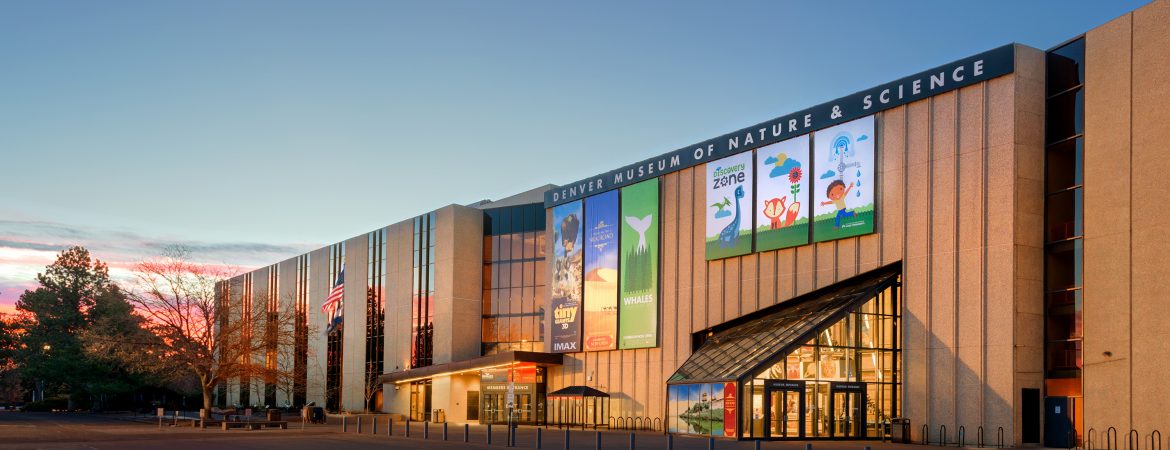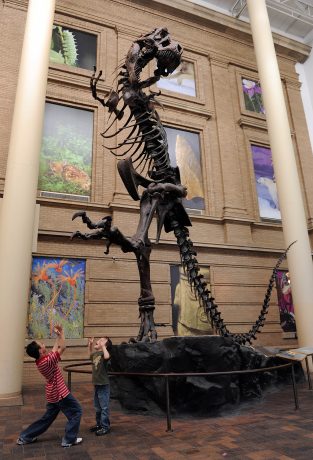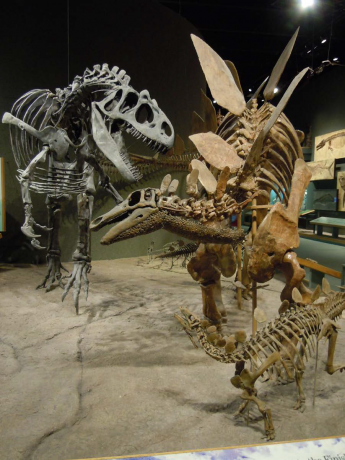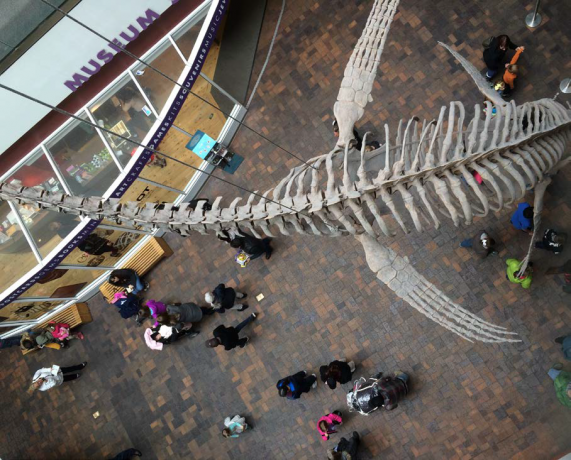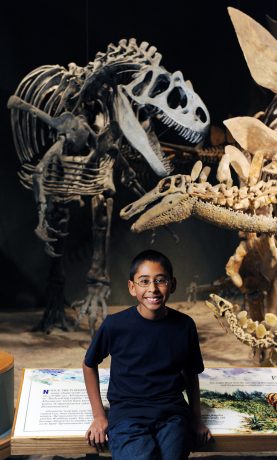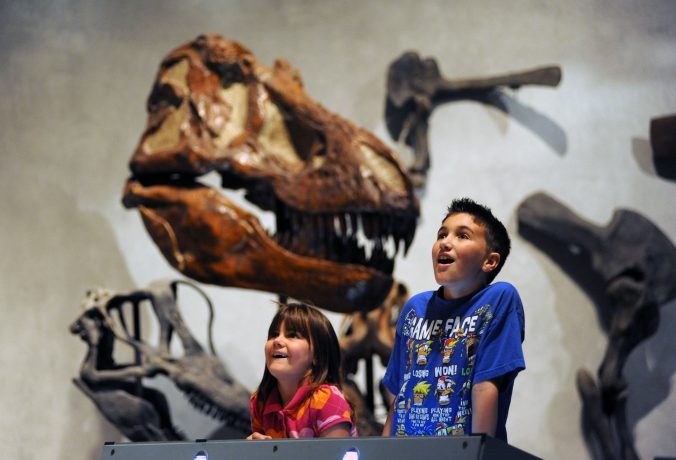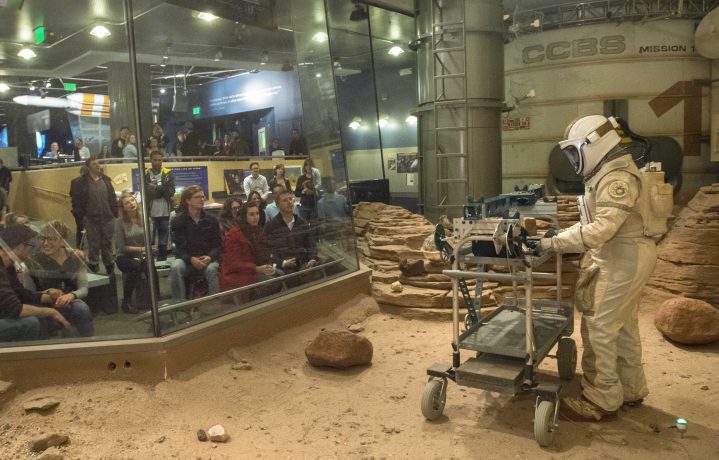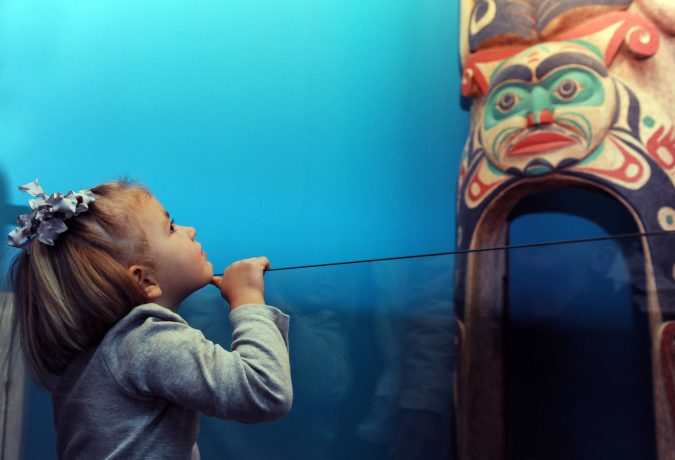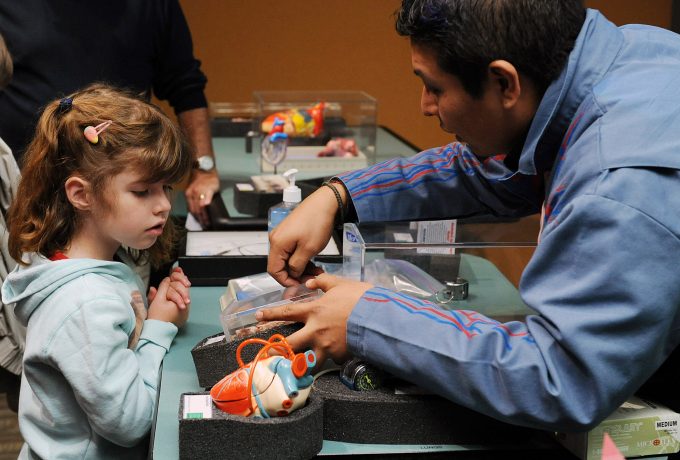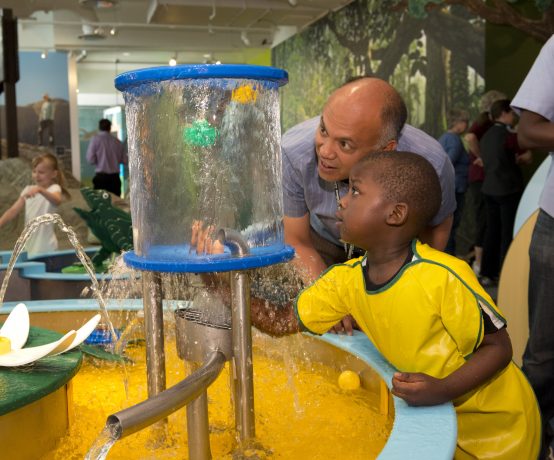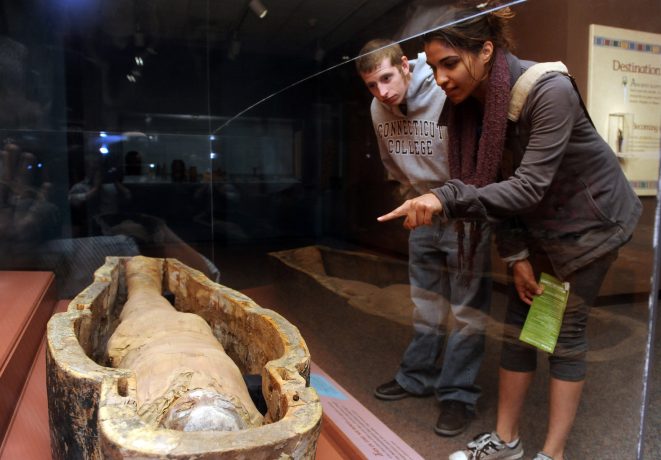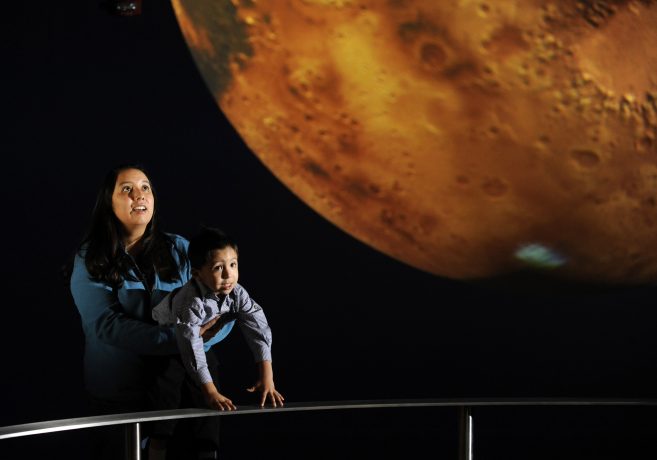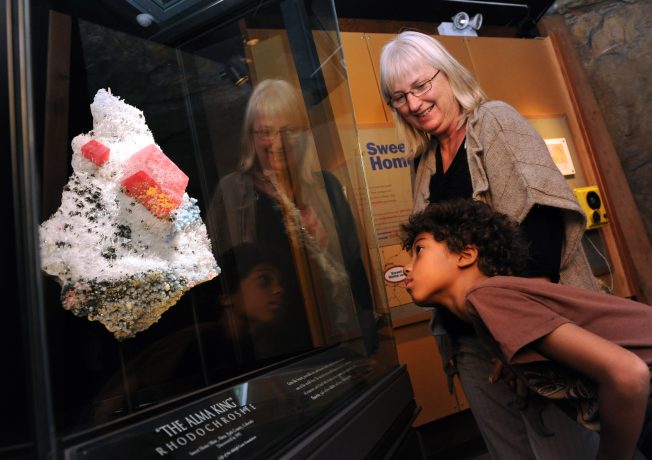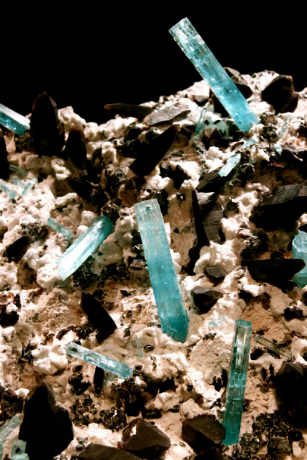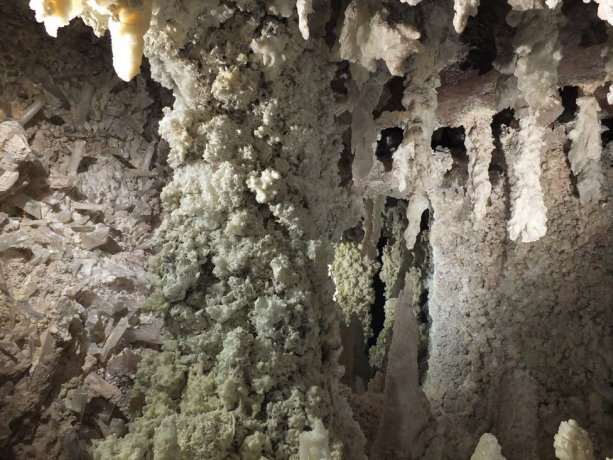For well over a century, the Denver Museum of Nature and Science has been the destination for grade school day trips and long weekend afternoons for the citizens of Colorado. It rises above the hardwoods of City Park, a building who betrays a different emotion with every one of its faces.
Glass double doors are positioned at the front of the building, part of an accordion-like apparatus whose shape is reminiscent of a vintage camera. The flat, sandstone walls emphasize the bright posters for both temporary and permanent exhibits, providing small doorways to the wonders you can expect to see on the inside.


The south-west entrance uses architectural flares to make itself memorable. It is a whimsical marvel with a series of Tetris-like window blocks spotting the wall and a rounded room of glass farther in. This makes the building slightly evocative of a display case in which the guests are the curiosities housed within.
Once inside, visitors are greeted by the skeleton of a Tyrannosaurus Rex, rising two stories and filling the open-air entryway. The walls behind it are covered in posters and hint at the diverse collections contained at DMNS: the vibrant eye of an owl, microscopic globs of red blood cells, vivid Anasazi pottery, a wolf captured half-stride, an astronaut suspended in nothingness.
Even if the museum’s facade looks rather intimidating from the outside, the massive, brightly lit entry hall ushers in visitors and stirs up a sense of wonder, one difficult to express. There is something about the fresh air and distant conversations echoing off the walls that seems far from the usual reverent environment that is associated with such formidable institutions. Indeed, DMNS serves as a massive melting pot of the Denver area and beyond, with people of every conceivable background convening to indulge their shared curiosity.


Once you purchase a ticket at the front desk and turn the corner into the museum proper, you are accosted by the floating forms of Elasmosaurus and Ichthyosaurus, the fossilized remains of oceanic dinosaurs suspended from strings several stories up. If you climb the stairs to the upper floors, the sheer size of these ancient monsters becomes quite evident. You can see them from all angles as you move between different exhibits. Standing at the highest level gives the impression of looking down on an aquarium of prehistoric beasts, as if water is the only thing that separates you and a beast from the Jurassic period.
The museum’s grand hall is a popular wedding location and the reasons for this are obvious the moment you see it. During operating hours, the colossal room is a designated eating area just outside of the T-Rex Café (although the space is more Hogwarts-esque than you would expect in the western United States). The cafeteria’s floor is a deep-red cobblestone and windows stretching up several stories (are you starting to notice a theme?) allow maximum daylight to permeate. Even the ceiling is mostly a massive pyramidal skylight. Miniature potted palm trees are dispersed between café tables, their dark green fronds provide a stark contrast to the warm neutral colored walls.
The whole dining hall is a blend of outside and inside. On one hand, the natural lighting, cobblestone, and plants make you feel like you are sitting in front of a local café on some European street. While on the other, columns rise around you and the beige walls are like those of a Grecian temple (or a Victorian’s notion of a Grecian temple) and visible at every angle.
If you wander far enough into any of the galleries on the west side of the museum and have the curiosity (or daring) to open a few unmarked doors, then you will find yourself in the Leprino Family Atrium. It is a massive room filled with café tables and comfy armchairs facing a wall of windows three stories high. The glass offers a panoramic view of City Park and Denver’s iconic skyline, all framed by the Rocky Mountains dramatically jutting outwards in the distance. It is not uncommon to see the park full of roses in the spring, along with what seems to be half of Denver’s population, renowned for their active lifestyles.
Turning inwards from the windows gives quite the view as well. There are two flights of angular stairs leading up to balconies and into the back doors of galleries. The open space is decorated with rounded architectural flairs, slightly reminiscent of a spaceship’s hull. The roof of the atrium is designed to facilitate stargazing, falling right in line with the museums commitment to stirring wonder in the hearts of its visitors. On sunny days (Denver happens to have more than three hundred of these every year so the odds are in your favor!), you can see about two hundred miles in the distance.
In late 1900, what would become the Denver Museum of Nature and Science was officially incorporated on the same plot of land in downtown Denver that it now resides. The collection was originally comprised of gems, minerals, fauna native to Colorado, and a huge number of preserved moths and butterflies. Hints of these original disciplines still feature prominently in the museum’s permanent displays.
The design of exhibits at the Denver Museum of Nature and Science are delightfully intentional. Take, for example, their permanent collection of fossils. A winding path guides you through two floors of geological time and ranges from the stone shadows of Jurassic ginkgo trees to mammoth teeth the size of microwaves. An element of it recalls a hiking trail, of which Coloradans know a great deal, or maybe a zoo. Lively and well-designed dioramas give the impression that you are merely an interloper in the grand geological symphony. If you listen closely, you might notice that museum speakers softly play the ambient noises of a long-forgotten landscape to increase the atmospheric feeling of the exhibit.
A floor below and a world away from the prehistoric journey is the museum’s renowned collection of gems and minerals. Thousands of glittering specimens are displayed in a winding gallery of rough stone walls and simple wooden beams. It feels like you have wandered into a well-stocked mine. At the end of the first low-ceilinged hallway is a window peering into a full-sized crystal cavern, a sight that steals your breath away. Cleverly placed mirrors make the cave look like it stretches deep into the heart of the museum, although viewers are none the wiser to the ruse.
Taxidermy collections are hardly big-ticket items at modern museums, especially when the magnetic appeal of mummies and spaceships are just down the hall, but DMNS resolutely dedicates a great deal of their space to elegant wildlife dioramas.


These scenes feel feral and up-close in a way that trips to the zoo just can’t imitate, more reflective than interactive. Again, the experience is enhanced by the deliberate choices of the interior designers. It is a dark maze that spans two floors and arranged by location. Each scene is meticulously displayed; there are walruses in snow, leopards in trees, manatees in aquatic grasslands. It is not uncommon to see the more artistically inclined practicing their skills, sitting on the benches arranged near each of the displays.
